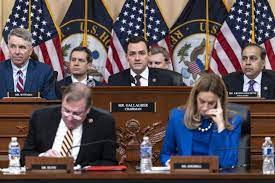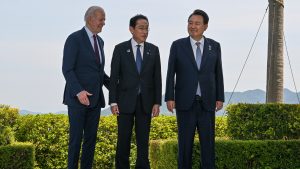
It wasn’t long ago that demands for a more ‘strategic autonomy’ approach for Europe seemed to slip away with Russia’s invasion of Ukraine. As Steven Erlanger of the NYTimes wrote of Europe’s response to Russian aggression at the time:
“Russia’s invasion of Ukraine is the greatest challenge to European security since the end of the Cold War, but the Europeans have missed the opportunity to step up their own defense, diplomats and experts say. Instead, the war has reinforced Europe’s military dependence on the United States.”
Not only was there dependence on the US on the Ukrainian battlefield, the first in Europe since World War Two, but there was a growing acceptance of Biden administration efforts to strengthen alliances and partnerships:
“Washington, they note, has led the response to the war, marshaled allies, organized military aid to Ukraine and contributed by far the largest amount of military equipment and intelligence to Ukraine. It has decided at each step what kind of weapons Kyiv will receive and what it will not.”
“But the goal of President Emmanuel Macron of France for “strategic autonomy” — for the European Union to become a military power that could act independently of the United States, if complementary to it — has proved hollow.”
As identified by my colleague, Charles Kupchan, a former Obama official and currently a senior fellow at CFR and a professor of international affairs at Georgetown:
“There is very little appetite for autonomy if that means distance from the United States,” he said, “because the war has underscored the importance of the American military presence in Europe and the guarantee it extended to European allies since World War II.”
But as they say: ‘that was then, and this is now’. Built on Trump’s early efforts to end the war, browbeating, it would seem, Ukraine to accept a cession of fighting, Europe is back. And it starts with Germany and its likely new Chancellor, Friedrich Merz. As identified by Anne-Sylvaine Chassany and Laura Pitel in Berlin for the FT:
“Chancellor-to-be Friedrich Merz has agreed a deal with his likely coalition partner to inject hundreds of billions in extra funding into Germany’s military and infrastructure, in a “fiscal sea change” designed to revive and re-arm Europe’s largest economy.”
“A provision would exempt defence spending above 1 per cent of GDP from the “debt brake” that caps government borrowing, allowing Germany to raise an unlimited amount of debt to fund its armed forces and to provide military assistance to Ukraine.”
“The future [German] coalition partners will introduce another constitutional amendment to set up a €500bn fund for infrastructure, which would run over 10 years. They are also planning to loosen debt rules for states.”
The German effort by this likely new government underlines the growing sense of emergency in Europe as Trump threatens to not defend NATO members who fail to adequately spend on in their own defense:
“Germany’s massive fiscal stimulus has also underlined the sense of urgency in Europe, spurred by US President Donald Trump’s threat to unwind the US guarantees that have long underpinned the continent’s security. “This is a fiscal sea change for Germany,” said Holger Schmieding, chief economist at Berenberg. “Merz and his coalition-to-be are rising to the occasion.”
The fiscal actions announced are all the more startling given the CDUs earlier opposition to reforming the debt brake:
“Merz’s conservative CDU/CSU had opposed reforms to the debt brake before the February 23 election. However, hours after coming first in the nationwide vote, the staunch transatlanticist declared that Europe needed to achieve “independence” from Washington given that Trump appeared “largely indifferent” to Europe’s fate.”
This defense response doesn’t stop with just Germany in Europe, however. The EU appears also to be stepping up as well. As noted at the Italian research institute ISPI, the EU is stepping up as well:
“Yesterday, for the first time, the approval by the European Council of aplan to increase the defense and security of member states represented a – European – response to the change in the international order underway. The heads of state and government of the 27 have approved the 800 billion euro plan for rearmament illustrated by the President of the Commission Ursula von der Leyen. The agreement provides greater flexibility for member states on defense spending and debt and a 150 billion fund, in addition to opening the possibility of evaluating additional financing options. But above all, it indicates the urgency, matured in recent weeks, to change pace and contribute to the defense of Kiev and the continent, with or without US support.”
The shock of the ‘Trump abandonment’ of Europe is evident. Here is a view expressed by Francoise Hollande in the most recent Economist issue. Hollande served as President of France from 2012 to 2017:
“We need to be clear: while the American people may still be our friends, the Trump administration is no longer our ally. This is grave. It marks a fundamental break with the historic relationship between Europe and America and the link established after the second world war with the creation of the Atlantic alliance. It is unfortunately, however, indisputable. It is no longer merely a question of declarations designed to dumbfound, but of actions that mark much more than a disengagement: a strategic about-turn combined with an ideological confrontation. The signs of this reversal have been accumulating in recent weeks. The bewildering and degrading scenes in the Oval Office were the illuminating culmination.”
“In addition to this reversal of responsibility for the outbreak of war in Ukraine, with Volodymyr Zelensky portrayed as a dictator and Vladimir Putin as a leader respectable enough to be a regular interlocutor, there has been an unrestrained attack on the principles on which the Western alliance was previously founded.”
In the end, Hollande sets out what he sees as the necessary European response:
“So we have to admit that our alliance with America is broken for the foreseeable future, and draw all the consequences. I can think of at least three.”
“The first is that we must continue to intensify our aid to Ukraine. This means seriously increasing the French contribution, which is currently particularly low compared with that of Germany or Britain.”
“The second is the need to prioritise providing Ukraine with security guarantees. It is too early to define the form these will take or to talk about the presence of soldiers on the ground. But it is clear that if Europe wants to protect its current borders, it must shoulder its share of responsibility for the security of its closest neighbour, especially if America abdicates this responsibility.”
“The third consequence is the urgency of accelerating European defence spending and beefing up European capabilities.”
And the European response to Trump’s aggressive actions in Ukraine extend beyond the 27, or at least the 26 as Hungary has refused to sign on the EU action, to now include the UK, Norway and possibly Turkey. So from Jeanna Smialek from the NYTimes Brussels office in an article entitled, “Europe Races to Craft a Trump-Era Plan for Ukraine and Defense”:
“Much of Europe is now making a show of standing by Ukraine: Britain and France have indicated a willingness to send troops as a peacekeeping force if a deal is reached, and Prime Minister Keir Starmer of Britain has called for support from a “coalition of the willing.””
“Ms. von der Leyen’s plan to “rearm” Europe includes the €150 billion loan program and would also make E.U. budget rules more flexible to enable countries to invest more without breaching tough deficit limits.”
And this coalescing in Europe extends possibly to the French nuclear deterrent:
“France is willing to discuss extending the protection afforded by its nuclear arsenal to its European allies, President Emmanuel Macron said on Wednesday, as the continent scrambles to fend off heightened Russian aggression and diminishing American support.”
““I have decided to open the strategic debate on protection through deterrence for our allies on the European continent,” Mr. Macron added.”
But the Trump bullying of Ukraine seemingly has had, it seems, some political results as well, at least for the moment. Ukraine has indicated that it will in the coming weeks join negotiations to end the conflict. As identified in the FT,
“Volodymyr Zelenskyy confirmed the talks as he wrapped up a summit on Thursday with EU leaders, who rallied round the Ukrainian president and pledged to increase their own defence capabilities.”
“The war must be stopped as soon as possible, and Ukraine is ready to work 24/7 together with partners in America and Europe for peace,” Zelenskyy said in a post on Telegram after the Brussels summit. “Next week, on Monday, I am scheduled to visit Saudi Arabia to meet with the Crown Prince [Mohammed bin Salman]. After that, my team will remain in Saudi Arabia to work with American partners. Ukraine is most interested in peace.””
And, it would appear that the US-Ukraine mineral deal is back:
“Trump’s special envoy, Steve Witkoff, said the meeting with Ukraine would seek to agree [to] a framework for “a peace agreement and an initial ceasefire”.”
“The talks will be focused on the minerals deal that the US has struck with Ukraine as well as a possible ceasefire.”
It has been an exhausting, rather dismaying several weeks of Trump destructiveness. A dramatic turn in strategic partnerships has occurred, and there are now significant questions over the stability of the global order as Martin Wolf writes in the FT:
“These are merely two sets of decisions in the whirlwind that has accompanied the second Trump presidency. But for the outside world, they are of huge significance. They represent the end of liberal, predictable and rules-governed trading relationships with the world’s most powerful country and also the one that created the system itself. They also represent the abandonment by the US of core alliances and commitments in favour of a closer relationship with an erstwhile enemy. Trump clearly thinks Russia more important than Europe.”
As Wolf points out, it is more than possible that the EU and the UK can replace the US militarily but that can’t occur in the short term:
“The EU plus UK has a combined population 3.6 times Russia’s and a GDP, at purchasing power, 4.7 times larger. The problem, then, is not a lack of human or economic resources: if (a big if) Europe could co-operate effectively it could balance Russia militarily in the long run. But the difficulty is in the medium run, since Europe is unable to make some crucial military equipment, on which it and Ukraine depend. Would the US refuse to supply such weapons if Europeans bought them? Such a refusal to supply would be a moment of truth.”
This Post first appeared at Alan’s Newsletter: https://globalsummitryproject.substack.com/p/europe-into-the-breach
Image Credit: France 24

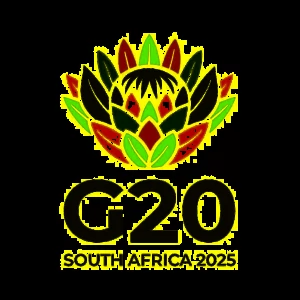
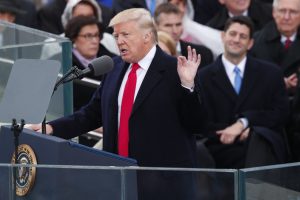
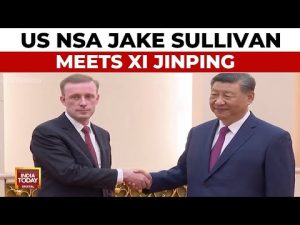 So, I was ruminating a bit on the question of US diplomacy coming off of the previous
So, I was ruminating a bit on the question of US diplomacy coming off of the previous 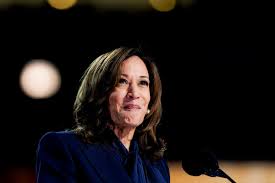 With just over 70 days until the US election, and with the certainty now of a new 47th President – either Harris or former President Trump – it is not surprising that analysts are scrambling to assess the current US foreign policy course and eyeing its new possible directions.
With just over 70 days until the US election, and with the certainty now of a new 47th President – either Harris or former President Trump – it is not surprising that analysts are scrambling to assess the current US foreign policy course and eyeing its new possible directions.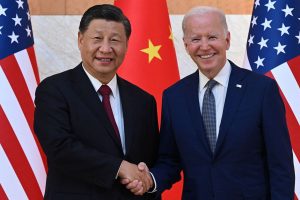
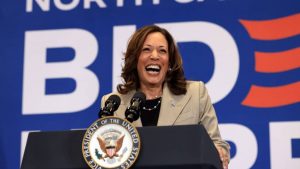
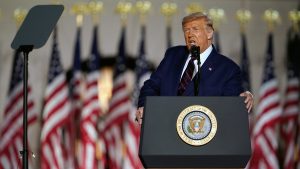 It’s rather foolish to believe that even a ‘bullet wound’ would alter Donald Trump. His speech accepting the nomination for the Republican Party on Thursday night – over 90 minutes – proved that. What you see is what you get. But let me reflect for a moment on the consequences for Trump, and the political system, of this attempt on his life. Its impact it seems on American politics, and more particularly on the Trump third presidential run – well, at least for the moment, appears rather negligible. As Susan B. Glasser of
It’s rather foolish to believe that even a ‘bullet wound’ would alter Donald Trump. His speech accepting the nomination for the Republican Party on Thursday night – over 90 minutes – proved that. What you see is what you get. But let me reflect for a moment on the consequences for Trump, and the political system, of this attempt on his life. Its impact it seems on American politics, and more particularly on the Trump third presidential run – well, at least for the moment, appears rather negligible. As Susan B. Glasser of 